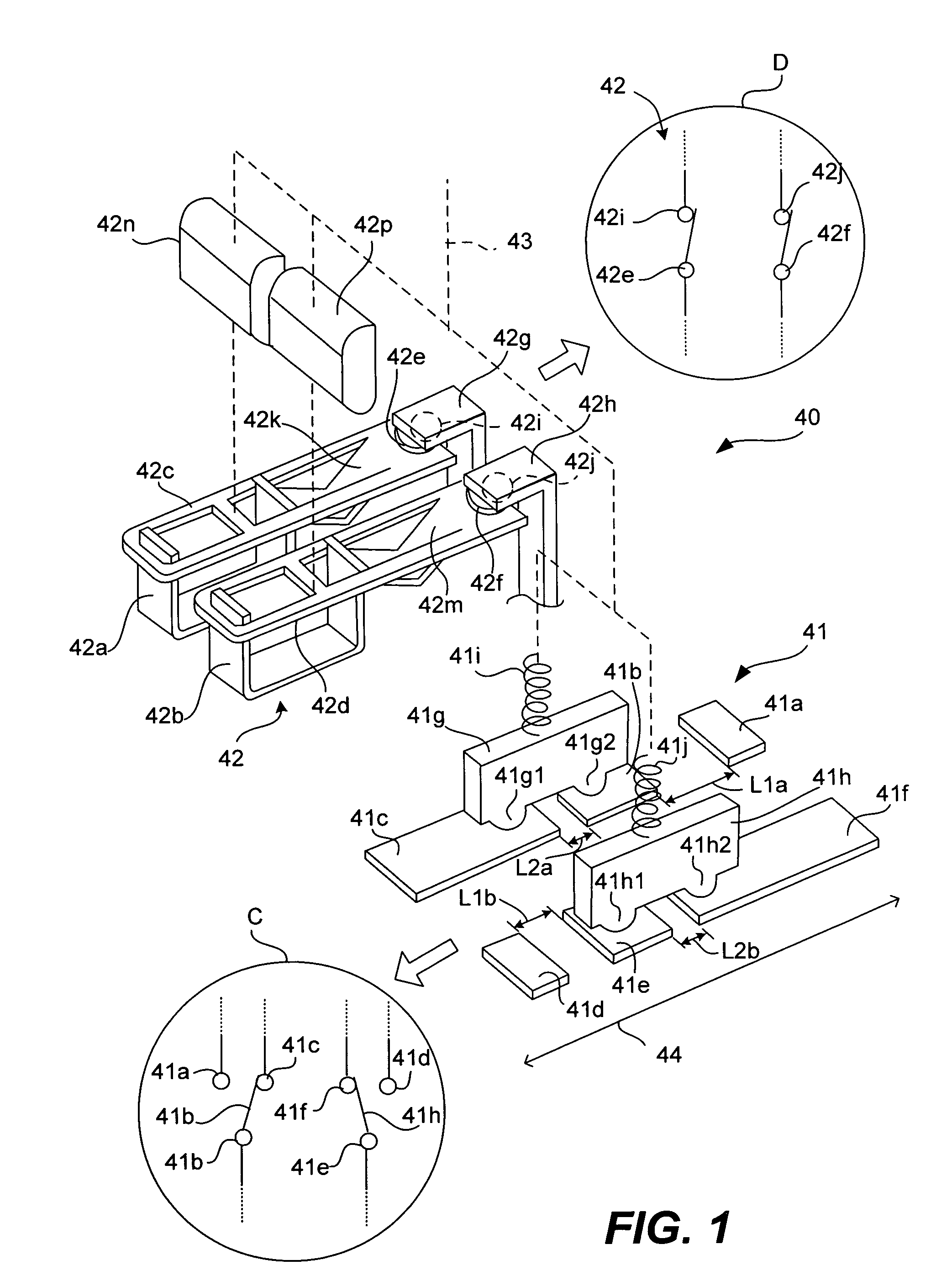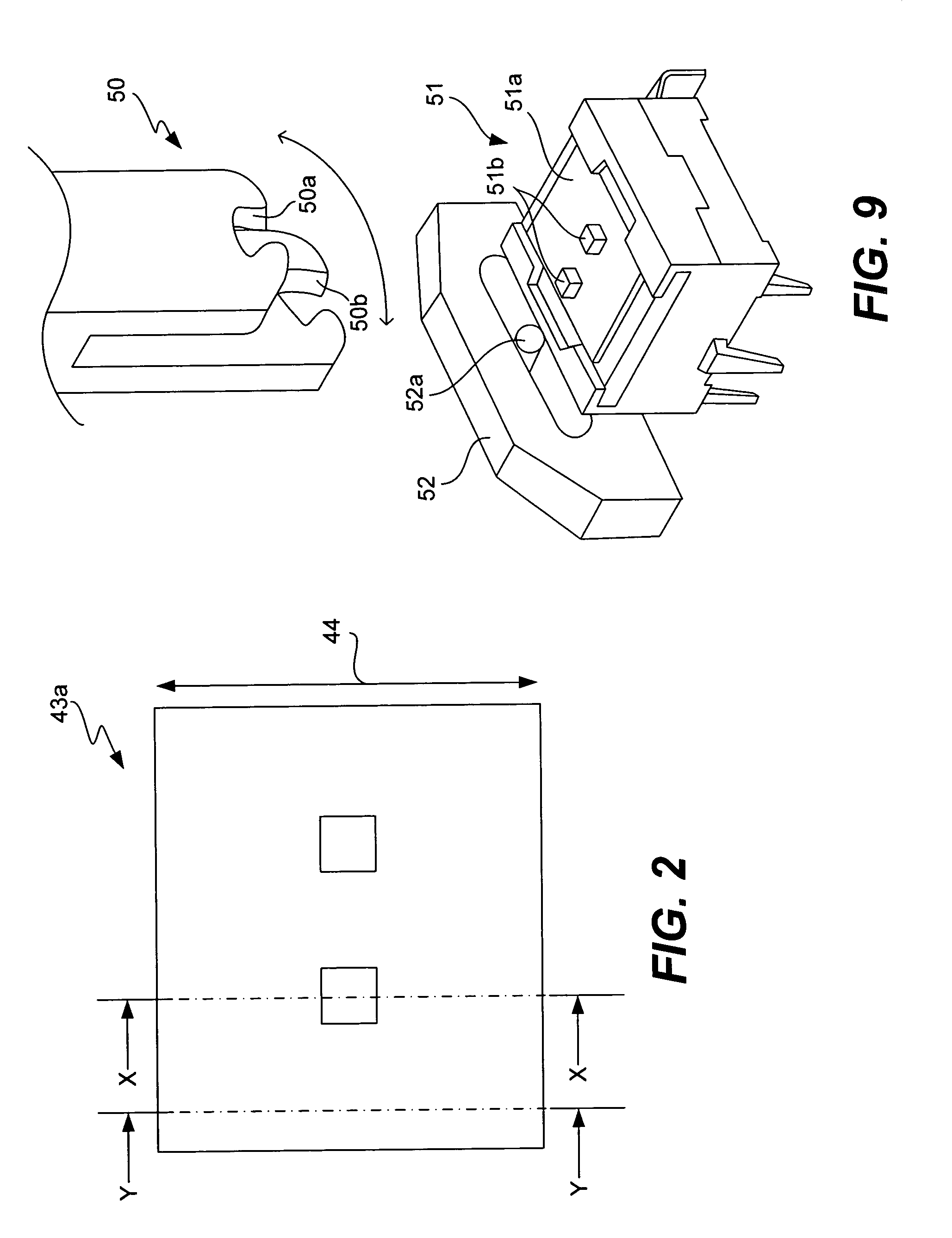Switch device
a technology of switch and contact, which is applied in the direction of dc motor stoppers, door/window fittings, wing accessories, etc., can solve the problems of affecting the operation of the switch unit as a whole, damage to the contacts, and the 14v system being hardly capable of providing sufficient power, so as to prevent the damage of the contacts and reduce the time lag in switching between contacts.
- Summary
- Abstract
- Description
- Claims
- Application Information
AI Technical Summary
Benefits of technology
Problems solved by technology
Method used
Image
Examples
Embodiment Construction
[0049]The invention is described next by way of examples. FIG. 1 shows a switch device 40 according to a first embodiment of this invention, which may be roughly characterized as comprising two switch elements (the first switch element 41 and the second switch element 42) and an operating element 43 for carrying out the switching operations of these two switch elements 41 and 42.
[0050]Next, each of these elements will be described individually. The first switch element 41 is comprised of six fixed electrodes 41a–41f each made of a planar metallic conductor inserted inside a molded base (not shown) or formed as a thin film and two mobile members 41g and 41h. The metallic material for these six fixed electrodes has a high electrical conductivity and is strong against wears such as copper, bronze and alloys of copper and iron. These six fixed electrodes are arranged in two group of three each, the first group consisting of electrodes 41a, 41b and 41c and the second group consisting of ...
PUM
 Login to View More
Login to View More Abstract
Description
Claims
Application Information
 Login to View More
Login to View More - R&D
- Intellectual Property
- Life Sciences
- Materials
- Tech Scout
- Unparalleled Data Quality
- Higher Quality Content
- 60% Fewer Hallucinations
Browse by: Latest US Patents, China's latest patents, Technical Efficacy Thesaurus, Application Domain, Technology Topic, Popular Technical Reports.
© 2025 PatSnap. All rights reserved.Legal|Privacy policy|Modern Slavery Act Transparency Statement|Sitemap|About US| Contact US: help@patsnap.com



